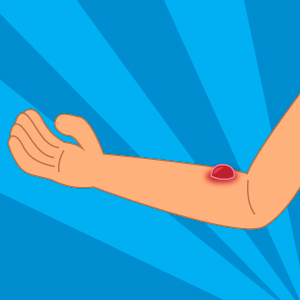What’s A Quanti Got To Do With It?
Chapter 2 of 'From Healthy Aides to Healthier Agency'
 Now that we have covered why testing for tuberculosis is crucial to your business and the safety of your home care workers and clients let’s dive deeper on the different exams available to test for TB.
Now that we have covered why testing for tuberculosis is crucial to your business and the safety of your home care workers and clients let’s dive deeper on the different exams available to test for TB.
 Knowing the cost and time requirements will help you better decide which test is best suited to streamline your onboarding process. As you may know, the two most common TB screening exams are PPDs and QuantiFERONs which vary in efficiency, accuracy and cost.
Knowing the cost and time requirements will help you better decide which test is best suited to streamline your onboarding process. As you may know, the two most common TB screening exams are PPDs and QuantiFERONs which vary in efficiency, accuracy and cost.
What is a PPD?
A PPD test consists of the patient receiving a Mantoux implant under the top layer of skin on their forearm. The PPD implant contains Tuberculosis antigens called purified protein derivatives (PPD) – if the patient has been exposed to the tuberculosis bacteria, a firm red bump will develop at the point of the injection within two days.

A PPD implant is typically the most affordable test used but given that it requires a second office visit for the implant to be read it isn’t always the most cost-effective in the end.
- As the Egyptian Journal of Chest Diseases and Tuberculosis noted in their comparative study between PPDs and QuatiFERONs, “…although the tuberculin skin test [PPD] is the method of choice for detecting latent M. tuberculosis infection, it cannot be considered a gold standard because of the number of false-positive and negative reactions, and the variability of their interpretation.”
